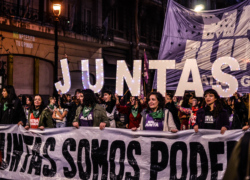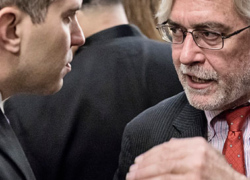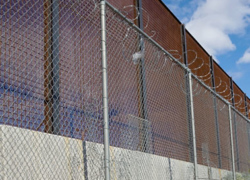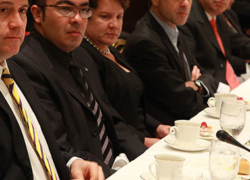Education Reform in Mexico: Is It at Risk?
This post is also available in: Español
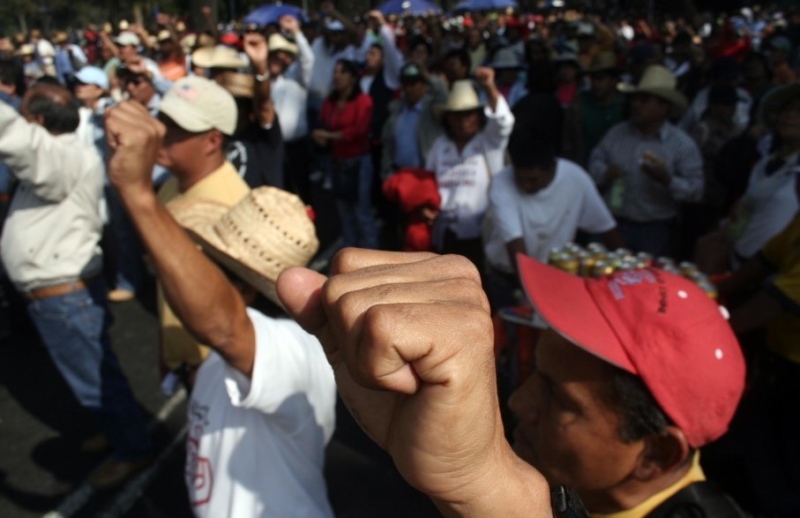 Jesús Villaseca P. / Latitudes Press / CC BY-NC-SA 2.0
Jesús Villaseca P. / Latitudes Press / CC BY-NC-SA 2.0
The quality of Mexico’s education system is deficient. In the latest Program for International Student Assessment (PISA) evaluations of 2012, Mexico ranked 53 out of the 65 countries that participated in the examinations, and last out of the 35 participating OCDE countries. 55% of students in Mexico did not reach a basic competency level (Level 2) in Math, while 41% and 47% did not achieve basic proficiency in Language and Science, respectively.
To address these deficiencies, in 2012 President Enrique Peña Nieto of Mexico announced an ambitious education reform which was approved by Congress as part of a multi-party agreement. The cornerstone of the reform was a renewed emphasis on education quality and policies to improve the performance of teachers. For instance, the reform introduced teacher professionalization legislation that made evaluations mandatory for both teacher candidates and teachers in service. To date, some 33,000 positions have been filled using these examinations, a new practice that makes the selection process more open and competitive and breaks with a corrupt tradition of nepotism and political favoritism in filling teaching positions.
The implementation of the reform has not been without difficulties and conflicts. Just weeks before the June 2015 mid-term elections, the Government announced an indefinite suspension of teacher performance evaluations. It is widely perceived that this was a measure to calm the fierce opposition by teacher unions, who threatened to boycott the elections. The decision generated strong criticisms from civil society, experts, as well as the national institute for educational evaluation. But following the elections, the Secretariat of Public Education (SEP) announced its intention to go forward with the evaluations, and this time the CNTE, the dissident teachers’ union, is threatening to boycott the evaluations themselves. This instability has shed doubts on the future of education reform in Mexico.
In light of the latest events, the Inter-American Dialogue hosted a panel discussion featuring expert analysts Claudio X. González (President of Mexicanos Primero and member of the Inter-American Dialogue), and Marco Fernández (Professor at the Instituto Tecnológico de Monterrey, researcher at México Evalúa and Fellow at the Wilson Center’s Mexico Institute), to share what they perceive are the main challenges to the education reform. The following are the four main takeaways from the event.
1. Weak command of the state over education: One of the stated objectives of the education reform is to help the Mexican state regain control of the education system, seeing that in many parts of the country, the state has lost sovereignty over education to teacher unions. Fernández considers Mexicans are far from achieving this goal. He estimates that at least 35 key state and local government positions responsible for implementing the reforms in their states are occupied by members of the unions; in these states, governors fail to enforce the new laws. In fact, the SEP is currently suing six states on grounds of unconstitutionality for approving education laws that contradict the reform’s laws.
Additionally, González lamented that the government has shown itself willing to violate the law in exchange for short-term political benefits. For instance, the government negotiated with the CNTE union in the midst of the protests, and conceded to several of their listed demands, including the “protection” of teaching positions, despite the fact that this contradicts the reform’s evaluation requirements.
Another example of weak state control over education is the lacking oversight of teacher absenteeism. González explained that reporting absences is the responsibility of school directors and supervisors. Because of their allegiance to the unions, they often do not report teacher absences. Whenever they are reported, however, teachers are seldom reprimanded. For instance, teachers belonging to the CNTE who missed school days as a result of engaging in the protests still received salaries for those two weeks they missed work. The SEP has received strong criticism for authorizing the payments. }
2. Lack of autonomy from evaluating authorities: The 2012 reform granted the National Institute for Educational Evaluation (INEE) autonomy from the national government. Both panelists believe the Secretariat of Public Education’s decision to suspend teacher evaluations violated INEE’s autonomy, but they also believe INEE did not show sufficient resistance to the announcement, by merely issuing a condemnatory press note. The experts believe INEE could have used legal instruments to fight the decision’s inconstutionality, a task that civil society took upon itself, achieving a legal injunction to the suspension.
3. Lack of transparency: With the reform’s creation of a new system of information and educational administration, Mexico administered the first census of its education system. But Fernández explains that some states protested the census, possibly because it represented a challenge to their practices and implied greater accountability and control. More alarming was teachers’ own reluctance to cooperate. There were at least 158,000 teachers that refused to answer the questionnaires of the census, and almost 7% of teachers missed work during the weeks of the census. This resistance is an obstacle to obtaining complete information of the education system.
4. Little involvement from parents: Both analysts find it worrisome that parents are showing a passive approval of the current state of education. Evidence shows that between 70% and 75% of parents believe their children are receiving a good education, explained Fernandez, findings that clash with what PISA results show. Additionally, while the reform also attempts to increase social participation in public schools, opportunities for parental participation have not had a good take-up. This implies more has to be done to inform and involve parents on their children’s education, in order to build support for the reforms.
In all, this complex reform touches on many entrenched practices that are in need of change. It should not be surprising that implementation is encountering setbacks, but there is concern among many analysts that the direction of the reform itself is being undermined. The good news is that there seems to be debate on the future of education and strong voices demanding that the government stands by the constitutional reforms. Whether that will happen or not remains to be seen.







